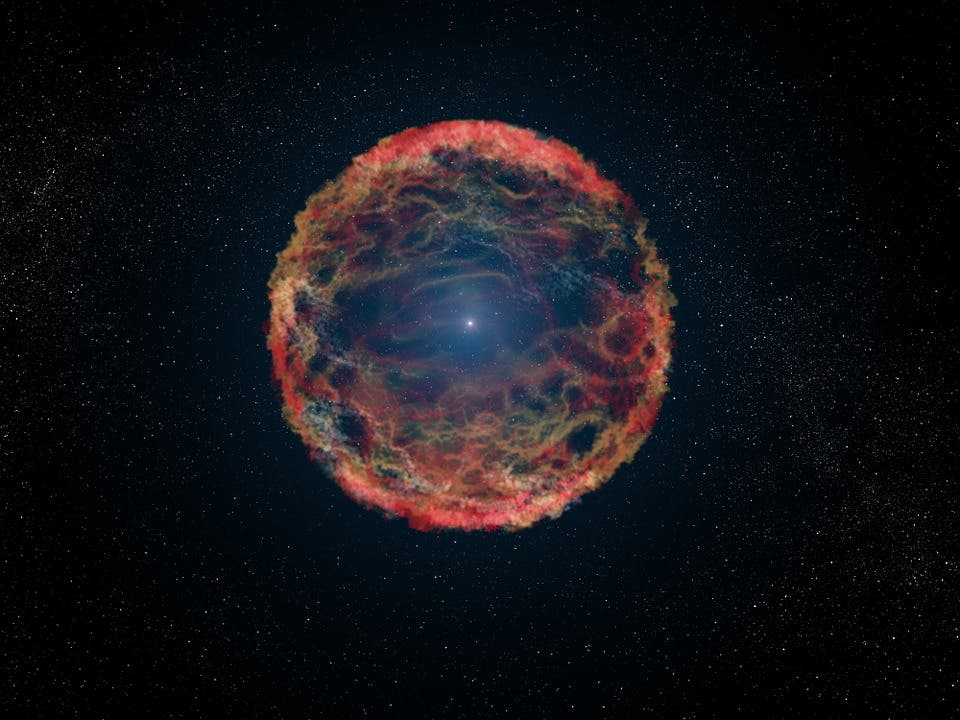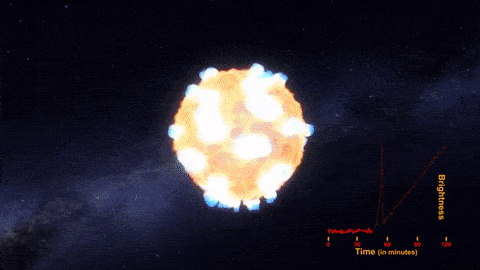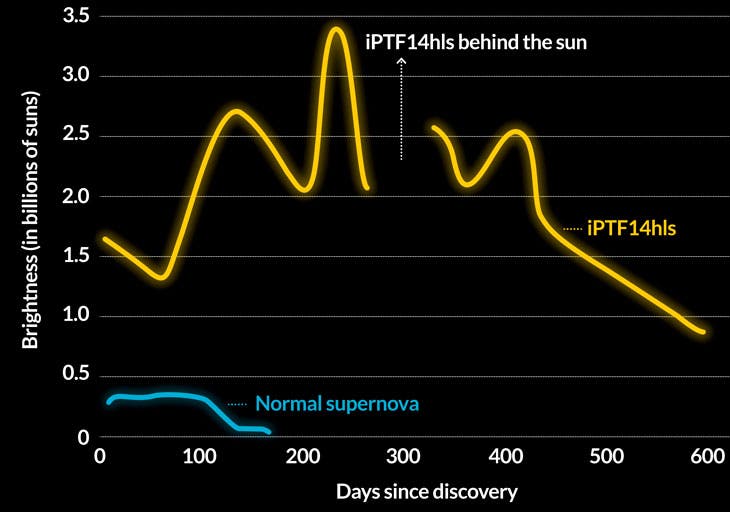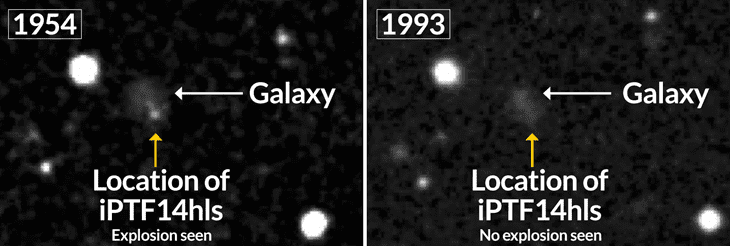A unique astronomical event is leaving many scientists scratching their heads. It all started in 2014 when astronomers picked up a seemingly typical supernova in the Big Bear constellation. But instead of getting fainter following its big finale, the supernova dipped and jumped in brightness multiple times. Though faint now, it’s still shining, even though a normal supernova would have extinguished long ago. This is a death-defying star if we’ve ever seen one.

The object, which astronomers have dubbed iPTF14hls, was initially classed as a Type II-P supernova, the most common type there is. One year later, though, Iair Arcavi and colleagues at the University of California, Santa Barbara, found that the supernova’s brightness increased. Typically, a supernova quickly peaks in brightness and then gradually fades away within 100 days. Our odd object grew dimmer and brighter in multiple pulses and is still going strong 600 days later, although it’s now gradually fading. It’s brightness mind-bogglingly fluctuated up and down at least five times that we know of.

Supernovae don’t behave like this at all. It’s totally anomalous and scientists aren’t sure what’s going on.
A supernova is a stellar explosion of cosmic proportions — death throes of old stars between eight and about 50 times the mass of the sun. They’re one of the brightest events in the universe, which can often outshine the entire galaxy it is located in, before fading away in a matter of weeks or months. During this short period, however, supernovae emit as much energy as the Sun emits during its entire lifespan.
Initially, Arcavi’s team thought it was dealing with a nearby star in our galaxy which appears brighter just because it’s closer. That’s hardly the case since iPTF14hls is located about 500 million light-years from Earth in a small, far-away galaxy.

To make things even weirder than they already were, the astronomers realized that a supernova was seen in the exact location in 1954. Astronomers have never observed unrelated supernovae occurring the same place decades apart. The chances that the two events aren’t related are very dim. This whole puzzling event is characterized by features that are unheard of.
According to one theory, some stars with a mass between 95 and 130 times that of the Sun can explode several times in cyclic deaths. In such stars, temperature rises to dizzying levels, in excess of 3 billion C (5.4 billion F) in the core, causing oxygen — then heavier elements — to fuse, blowing off massive amounts of material and resetting the cycle. This process repeats itself until iron is formed, at which point elements stop fusing and the star collapses in a black hole. The problem is that this model, called the pulsation pair instability (PPI) supernova, can’t account for the massive amount of energy released by iPTF14hls so far. What’s more, no such phenomena as observed thus far in order to validate this theoretical model.

Another hypothesis suggests iPTF14hls is, in fact, a magnetar — a rapidly spinning neutron star. It can spin 1,000 times per second and can pack the mass of 1.5 Suns in about the size of New York City. The spinning motion generates a massive magnetic field 100 trillion to 1 quadrillion times the strength of Earth’s field. Such a highly magnetized neutron star can shine brightly for around two years. However, a magnetar can’t explain the 1954 eruption, nor does the theory account for the dips and peaks in iPTF14hls’ brightness.
For now, we’ll just have to sit and wait it out until astronomers gather more data. As the supernova fades away, scientists should be able to peer deeper into the object’s structure — whatever it may be. In any case, this freak occurrence might change a lot about what science knows about both supernovae and galaxies. It suggests that star heavier than 100 solar masses can still form in the recent universe, which could have far-reaching ramifications.
Scientific reference: I. Arcavi et al. Energetic eruptions leading to a peculiar hydrogen-rich explosion of a massive star. Nature. Vol. 551, November 9, 2017, p. 210. doi: 10.1038/nature24030.






